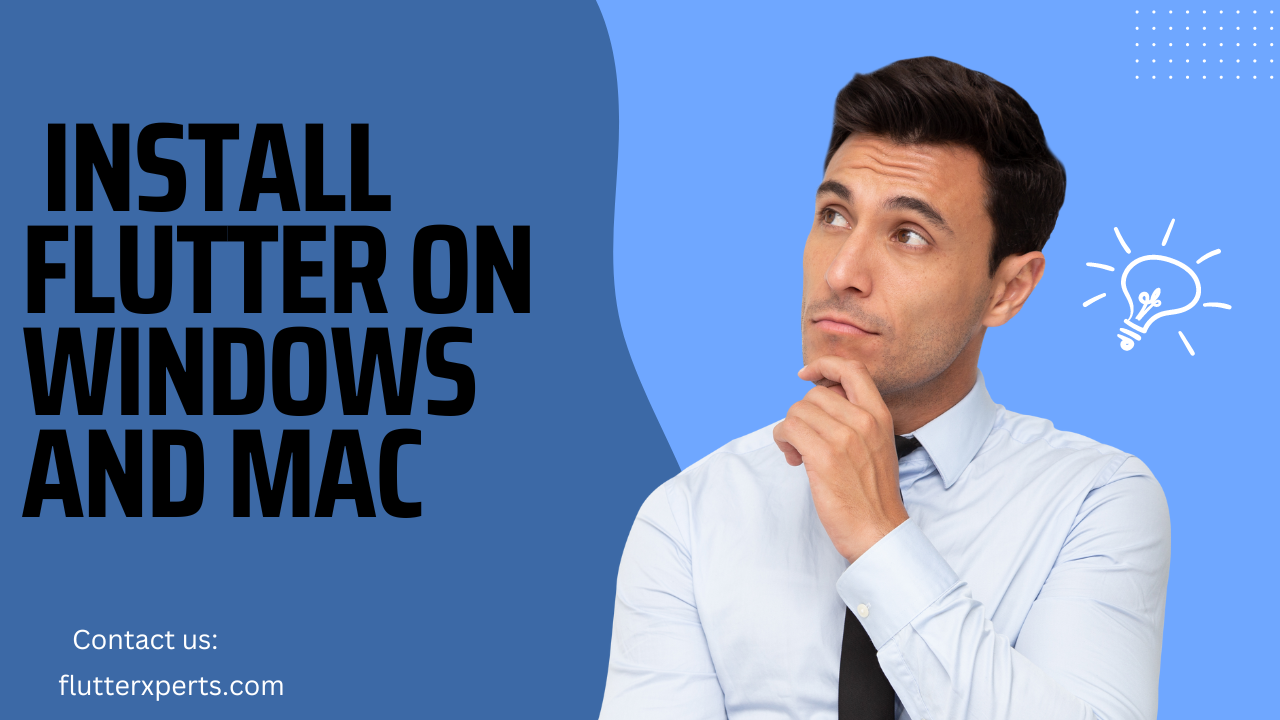Step-by-Step Guide: How to Install Flutter on Windows and Mac
Introduction
Flutter is a popular framework for developing cross-platform mobile applications. Whether you’re a beginner or an experienced developer, this step-by-step guide will walk you through the installation process of Flutter on both Windows and Mac operating systems. By the end of this tutorial, you’ll have a fully set up Flutter development environment ready to start building your own mobile apps.
System Requirements
Before diving into the installation process, ensure that your system meets the following requirements:
- Windows:
- Operating System: Windows 7 SP1 or later (64-bit)
- Disk Space: 2.8 GB (excluding the space required for IDEs/tools)
- Tools: Git for Windows
- Mac:
- Operating System: macOS (64-bit)
- Disk Space: 2.8 GB (excluding the space required for IDEs/tools)
- Tools: Git
Make sure you have administrative privileges on your machine to install the required dependencies.
Installing Flutter on Windows
Follow these steps to install Flutter on a Windows system:
Step 1: Downloading Flutter SDK
To begin, download the Flutter SDK from the official Flutter website (https://flutter.dev). You can choose either the stable release or the beta release, depending on your preference. Once downloaded, extract the ZIP file to a location of your choice.
Step 2: Setting up Flutter Environment Variables
Next, you need to add the Flutter SDK path to the system’s environment variables. Here’s how you can do it:
- Open the Start menu and search for “Environment Variables.”
- Click on “Edit the system environment variables.”
- In the “System Properties” window, click on the “Environment Variables” button.
- Under the “System variables” section, select the “Path” variable and click on “Edit.”
- Click on “New” and add the path to the Flutter SDK’s “bin” directory (e.g.,
C:\flutter\bin). - Click “OK” to save the changes.
Step 3: Installing Flutter Dependencies
Flutter requires a few additional dependencies to work properly. Open a command prompt and run the following command to install them:
flutter doctor
This command will check for missing dependencies and prompt you to install them. Follow the instructions provided by the Flutter CLI to install any missing components.
Step 4: Verifying Flutter Installation
To ensure that Flutter is installed correctly, run the following command in the command prompt:
flutter doctor
This command will display a report of the status of your Flutter installation. If everything is set up correctly, you should see “No issues found!” along with a list of connected devices (e.g., emulators or physical devices).
Installing Flutter on Mac
Here’s how you can install Flutter on a Mac:
Step 1: Downloading Flutter SDK
Start by downloading the Flutter SDK from the official Flutter website (https://flutter.dev). Choose either the stable release or the beta release, depending on your preference. Once downloaded, extract the ZIP file to a location of your choice (e.g., your home directory).
Step 2: Setting up Flutter Environment Variables
To set up Flutter environment variables on a Mac, follow these steps:
- Open Terminal.
- Run the following command to open the
.bash_profilefile:
open -e .bash_profile
- Add the following line to the file, replacing
[PATH_TO_FLUTTER_DIRECTORY]with the actual path to the Flutter SDK directory:
export PATH="[PATH_TO_FLUTTER_DIRECTORY]/flutter/bin:$PATH"
- Save the changes and close the file.
Step 3: Installing Flutter Dependencies
Flutter requires a few additional dependencies to function properly. In Terminal, run the following command:
flutter doctor
This command will check for any missing dependencies and guide you through the installation process.
Step 4: Verifying Flutter Installation
To verify that Flutter is installed correctly on your Mac, run the following command in Terminal:
flutter doctor
If everything is set up correctly, you should see “No issues found!” along with a list of connected devices.
Troubleshooting Tips
Sometimes, during the installation process, you may encounter common issues. Here are a few troubleshooting tips to help you resolve them:
Common Installation Issues and Solutions
- Problem: Flutter doctor reports a missing dependency.
- Solution: Follow the instructions provided by the Flutter doctor to install the missing component.
- Problem: Flutter installation is taking a long time.
- Solution: Ensure that you have a stable internet connection, as Flutter requires network access to download additional components.
- Problem: Flutter doctor reports a conflict with existing software.
- Solution: Check the error message and follow the provided instructions to resolve the conflict. You may need to update or uninstall conflicting software.
Additional Resources for Support
If you need further assistance or encounter any other issues during the installation process, refer to the following resources:
- Flutter Documentation: https://flutter.dev/docs
- Flutter Community: https://flutter.dev/community
- Flutter GitHub Repository: https://github.com/flutter/flutter
Conclusion
Congratulations! You have successfully installed Flutter on both Windows and Mac operating systems. With Flutter’s powerful framework, you can now start developing cross-platform mobile applications efficiently. Make sure to explore the extensive Flutter documentation and community resources for further learning and support.
FAQs (Frequently Asked Questions)
- Q: Can I develop iOS apps using Flutter on Windows?
- A: No, Flutter allows you to develop iOS apps only on macOS due to the restrictions imposed by Apple’s Xcode development environment.
- Q: Do I need any prior programming experience to use Flutter?
- A: While prior programming experience can be beneficial, Flutter provides an easy-to-understand framework and comprehensive documentation suitable for beginners. It’s a great way to start your mobile app development journey.
Remember to adapt and customize this blog to suit your specific requirements and add your unique perspective as a technical writer in the mobile application development industry.


